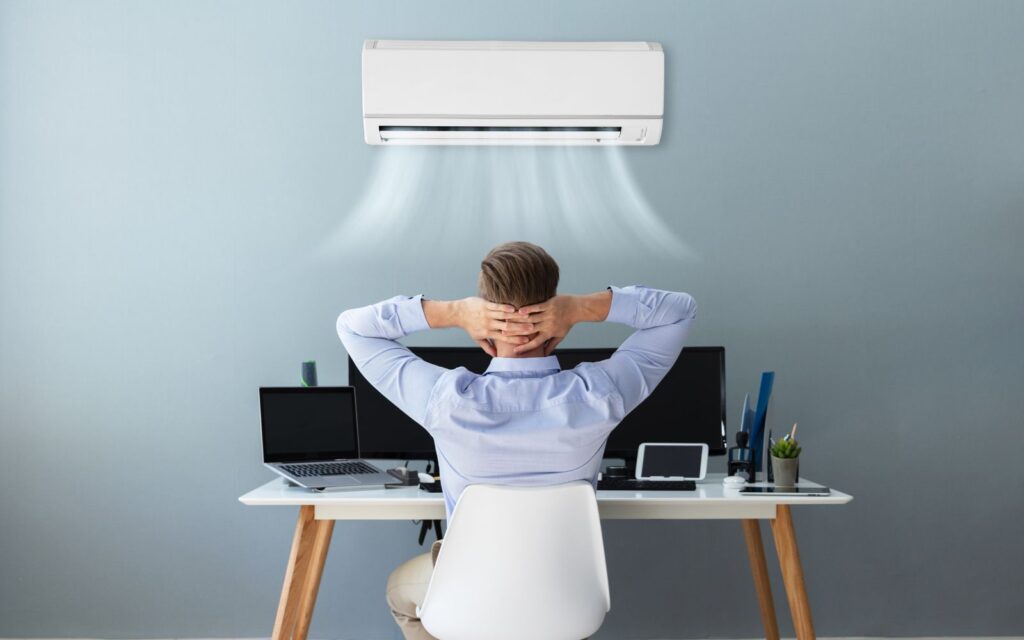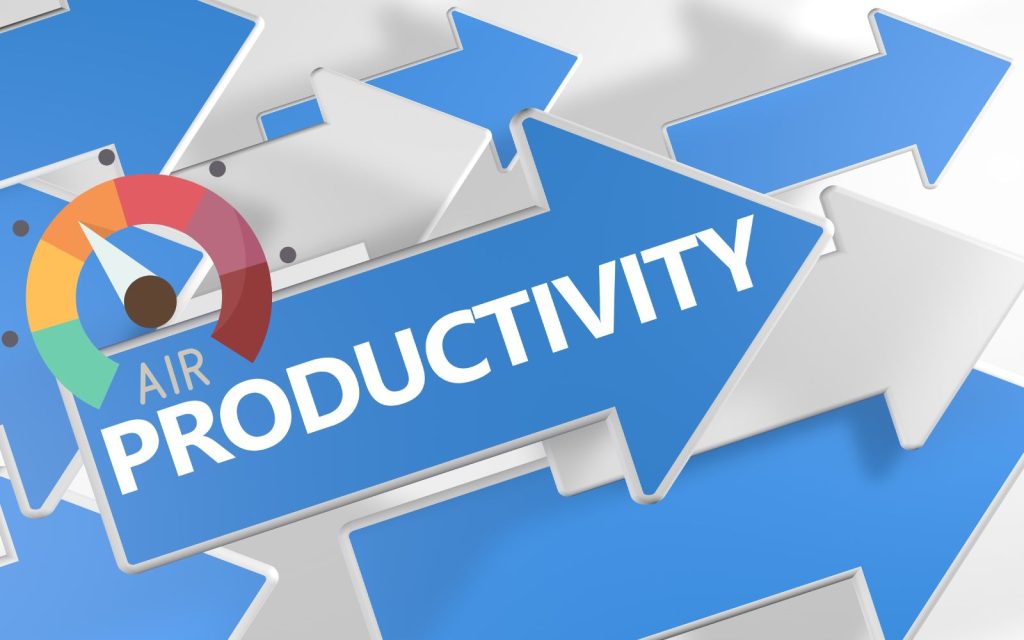How Poor Air Quality Affects Productivity: Awareness, Solutions, Progress

We all want to be productive at work, but many overlook one factor: air quality. You may not realize it, but the air we breathe impacts our ability to focus, make decisions, and even our overall well-being.
When poor outdoor or indoor air quality is ignored, it can significantly reduce worker productivity. In this article, we’ll explore how poor air quality affects productivity, how common air pollutants cause problems, and ways to improve indoor air quality for better performance.
Key Takeaways
- Poor indoor air quality can lead to physical discomfort, impaired cognitive function, and reduced decision-making abilities.
- Indoor air pollutants like volatile organic compounds (VOCs), particulate matter, and carbon dioxide (CO₂) can contribute to health issues and hinder work performance.
- Improving ventilation systems and using air purifiers can help enhance worker productivity and employee well-being.
- Cleaner air leads to healthier environments, fewer sick days, and better service and industrial performance.
1. Poor Air Quality and Its Effects on Worker Productivity

Bad air impacts your brain. When discussing how poor air quality affects productivity, we’re looking at how outdoor or indoor pollutants impact our focus, energy levels, and ability to think clearly.
Common symptoms of poor air quality at work:
- Mild headaches: Poor air, particularly in indoor environments, can cause headaches, making it harder to focus on tasks.
- Fatigue and sluggishness: Carbon dioxide and particulate matter exposure causes drowsiness and low energy levels.
- Impaired cognitive function: Poor air quality slows reaction times and increases the number of workplace mistakes.
Research shows that indoor air quality directly affects cognitive performance, as demonstrated by lower scores on cognitive tests when indoor air pollution is high.
When employees breathe air with relatively low oxygen concentrations due to pollution exposure, their ability to perform even simple tasks is affected.
This is particularly relevant for jobs in office spaces, where poor ventilation systems can lead to reduced accuracy and slower responses.
2. The Role of Air Pollutants in Reducing Productivity

In a typical indoor environment, several factors contribute to poor air quality. These include volatile organic compounds (VOCs), particulate matter, and carbon dioxide from various sources, such as fossil fuel combustion, cleaning supplies, and office equipment.
Key air pollutants affecting workspaces:
- Volatile organic compounds (VOCs): These are emitted from products like paints, carpets, and furniture. Prolonged exposure can lead to dizziness, nausea, and impaired cognitive function.
- Particulate matter: Fine dust particles that can penetrate indoors through windows or HVAC systems. Inhaling these particles can trigger allergies and respiratory problems, reducing employee focus and well-being.
- Carbon monoxide (CO) and carbon dioxide (CO₂): These gases reduce the amount of oxygen your brain receives, leading to diminished cognitive function and lower daily productivity.
Poor air impacts center workers or industrial environments more severely due to exposure to industrial processes and pollutants like nitrogen oxides and other chemicals.
These can cause long-term health problems, which may also lead to fatal diseases, and they can lead to economic costs in terms of lost productivity, higher healthcare and legal expenses, and turnover.
3. Improving Indoor Air Quality to Boost Productivity

Knowing how poor indoor air quality affects performance is the first step; now, let’s focus on what can be done to fix it. Improving indoor air quality is essential for both worker productivity and overall employee well-being.
Practical steps to improve air quality:
- Better ventilation: One of the easiest ways to enhance indoor environments is to improve ventilation systems. Ensure proper airflow, whether by opening windows or upgrading your HVAC system.
- Use air purifiers: These devices are excellent for removing harmful air pollutants like dust, VOCs, and other airborne particles, helping to create a healthier workspace.
- Maintain healthy humidity levels: Too much humidity encourages mold growth, contributing to indoor air pollution. Managing humidity can prevent these issues.
- Choose eco-friendly products: Avoid harsh chemicals and clean supplies that don’t release volatile organic compounds into the air.
4. The Business Strategy Moving Forward: Cleaner Air for Higher Productivity

Improving air quality isn’t just essential for workers; it’s an intelligent business strategy. As more companies and real estate investments recognize the link between air quality and economic output, prioritizing healthy air in office designs or renovations can increase a business’s competitive edge.
Why this matters for businesses:
- Higher productivity: Studies have shown that improving indoor air quality by managing particulate matter and reducing air pollution boosts cognitive function, allowing workers to make decisions faster and more accurately.
- Fewer sick days: Cleaner air means healthier employees. When pollution levels are low, respiratory-related illnesses decrease, reducing absenteeism.
- Improved employee well-being: Healthier employees are more motivated, engaged, and loyal to their employers, creating a positive work culture.
Investing in better HVAC and ventilation systems can also reduce carbon dioxide and other harmful gases that lead to poor work performance. As evidence suggests, improving air quality can reduce the economic costs associated with employee health, leading to a more sustainable and profitable business model.
Summary
Poor air quality, whether indoors or outdoors, significantly impacts worker productivity. From causing physical discomfort and impaired cognitive function to contributing to long-term health issues, polluted air makes it harder for employees to perform their best.
The good news is that businesses can enhance worker productivity and create healthier work environments by improving indoor air quality through better ventilation systems, air purifiers, and management of volatile organic compounds.
As the link between cleaner air and performance becomes clearer, investing in healthy buildings and proper ventilation is a smart move for any company looking to succeed.
Frequently Asked Questions
How Does Poor Air Quality Affect Productivity?
Poor air quality reduces the amount of oxygen available to the brain, leading to fatigue, slower decision-making, and lower focus, which decreases productivity.
What Are the Health Risks of Poor Indoor Air Quality?
Prolonged exposure to indoor air pollution can lead to respiratory problems, chronic headaches, and even impaired cognitive function. Volatile organic compounds and particulate matter are significant contributors to these issues.
How Can I Improve Indoor Air Quality at Work?
Simple ways to improve indoor air quality include using air purifiers, increasing ventilation, managing humidity levels, and avoiding products that emit harmful chemicals.
Why Is Ventilation Important in Office Buildings?
Proper ventilation systems filter out pollutants like carbon dioxide and particulate matter, leading to healthier indoor environments and better employee performance.
What Impact Does Air Quality Have on Cognitive Function?
Poor air quality impairs brain function, slowing reaction times and reducing accuracy. Studies show that employees in polluted environments perform worse on cognitive tests and respond slower.





